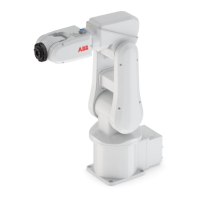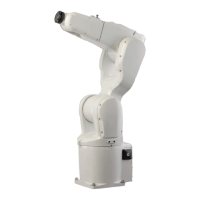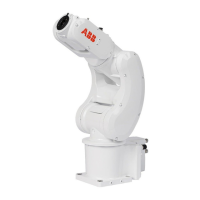
 Loading...
Loading...
Do you have a question about the ABB IRB 120 and is the answer not in the manual?
| Type | Industrial Robot |
|---|---|
| Axes | 6 |
| Payload | 3 kg |
| Reach | 580 mm |
| Repeatability | ±0.01 mm |
| Weight | 25 kg |
| Protection | IP40 |
| Controller | IRC5 Compact |
| Power Consumption | 0.25 kW |
| Mounting | Floor, Wall |
| Operating Temperature | 5°C to 45°C |
Overview of safety information categories: general aspects, signals, and specific instructions.
Details general safety information for installation, maintenance, and repair personnel.
Explains safety signals (DANGER, WARNING, CAUTION) and symbols used in the manual and on the product.
Provides specific safety instructions and warnings for dangerous steps in procedures.
Details procedures for lifting, orienting, securing, and fitting equipment onto the robot.
Details robot cabling, connection points, and bending radius for static floor cables.
Specifies maintenance intervals and activities (inspection, replacement, cleaning) based on a schedule.
Covers procedures for replacing motors and gearboxes for individual axes (1 through 6).
Covers gearbox replacement for individual axes (1 through 6), often referring to motor replacement.
Describes how to perform a rough calibration by updating revolution counters using the FlexPendant.
Details the Axis Calibration method, including its description and procedure on the FlexPendant.
Describes manual calibration procedures for individual axes using calibration pins and the FlexPendant.











